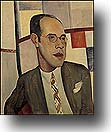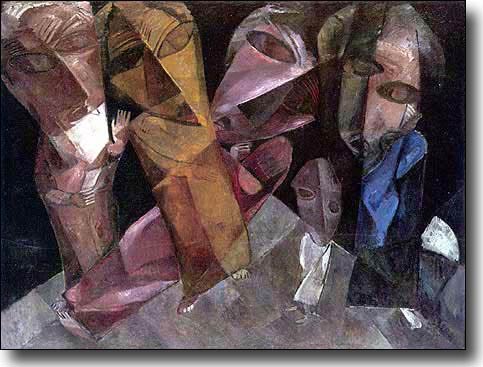

|

Museo de Arte Moderno, Mexico,
Mar 06, 2002 - Jun 02, 2002
Mexico, D.F, Mexico
Lasar Segall: A Brazilian Expressionist
by Jennifer Teets
Lasar Segall: Un Expresionista Brasileño, the first major Mexico retrospective of the work of preeminent Brazilian artist Lasar Segall (Vilnius, Lithuania, 1891-Sau Paulo, Brazil, 1957), opens at the Museo de Arte Moderno's Sala Antonieta Rivas Mercado March 6, 2002. Featuring 120 works integrated into 10 thematic sections (explained in detail below), the artist who is known best by his contributions to German Expressionism and Brazilian modernist painting, spent his childhood immersed in the traditions of Orthodox Judaism. His first exposure to international aesthetic and political concerns came as a student at the Berlin Art Academy where he created paintings of interiors and figurative portraits. After his travels to Germany and Holland between 1909 and 1912, he decided to visit his brothers in Brazil and thus begins his career in a country that would greatly influence his work. Later that year, after his first exhibition in Brazil, he returned to Germany and, due to his Russian citizenship, was interned as an "enemy alien" for the duration of World War I. In the following years he was introduced to such artists as George Grosz, Otto Dix and Kurt Schwitters, and founded with Conrad Felixmuller the radical artists' Dresden Secession Group 1919 to promote an Expressionist avant-garde aesthetic philosophy and organize exhibitions. Though Segall's initial trip to Brazil had no visible impact on his work in Germany, it was the catalyst for his emigration ten years later. After officially moving to Brazil in 1924, Segall became an influential figure, infusing Brazilian modernism with the color, psychological intensity, and spatial distortion characteristic of the German tradition. Brazil came to represent the artist's new identity and culture, expressed in such oil paintings as Self-Portrait II/Autorretrato II (1919). He was later known to celebrate "exoticism," through the people and vegetation of his adopted country in works such as Young Boy with lagartijas/ Niño con lagartijas (1924) and Brazilian Landscape/Paisaje brasileño (1925). The curator of the exhibition, Vera d'Horta is quick to point out that Segall's artistic production began to develop in a more reflective manner after living in Brazil for twenty years. She notes that after becoming closer to the cultural realities of Brazil we see an artist who, "reflects over the initial impression [the country had on him] and adds it to his Judaic origins, thus beginning to create more elaborate works, with the impression and clash of the whole European and American question." Lasar Segall: Un Expresionista Brasileño is on exhibit until June 2, 2002, Sala Antonieta Rivas Mercado/Museo de Arte Moderno/INBA.
|

About the Author
|
Jennifer Teets, independent curator based in Mexico City, completed the project F(r)icción David Phillips & Paul Rowley at the Museo de Arte Carrillo Gil; programs for the Fourth International Festival of Sound Art, Habitat Sónico, at the Ex Teresa Arte Actual space including such artists as Rosa Barba, Mouse on Mars, and Niobe. She is currently at work on a project exchange with the Townhouse Gallery in Cairo, Egypt and works regularly in collaboration with artist Gustavo Artigas.
|
back to exhibitions
|





